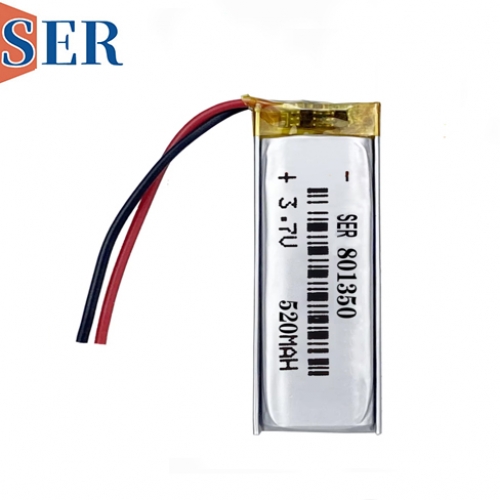Connecting high temperature Batteries in Series or Parallel: A Technical Analysis
Connecting high temperature Batteries in Series or Parallel: A Technical Analysis
Introduction
Lithium high temperature batteries, including 3.6V Li-SOCL2 battery,3.0V LiMNO2 battery,high temperature Lipo battery,high temperature ultrathin battery and LiFePO4 batteries, due to their high energy density, low self-discharge rate, and long lifespan, have become the preferred choice for numerous applications ranging from consumer electronics to electric vehicles and renewable energy systems. When it comes to using multiple lithium batteries to meet a specific voltage or capacity requirement, the question often arises: should the batteries be connected in series or parallel? This article aims to provide a detailed technical analysis of the advantages, disadvantages, and considerations for connecting lithium batteries in both series and parallel configurations.
Lithium Battery Basics
Before delving into the connection configurations, it's important to understand the basics of lithium high temperature batteries batteries. Lithium batteries,3.6V Li-SOCL2 battery,3.0V LiMNO2 battery,high temperature Lipo battery,high temperature ultrathin battery and LiFePO4 batteries,have a positive electrode (cathode), a negative electrode (anode), and an electrolyte that allows ions to move between the two electrodes. During discharge, lithium ions move from the negative electrode to the positive electrode, releasing energy. During charge, the process is reversed, with lithium ions moving back to the negative electrode.
Connecting in Series
Connecting lithium high temperature batteries in series involves arranging the 3.6V Li-SOCL2 battery,3.0V LiMNO2 battery,high temperature Lipo battery,high temperature ultrathin battery and LiFePO4 batteries so that the positive terminal of one battery is connected to the negative terminal of the next battery. This configuration increases the voltage output while maintaining the same capacity as a single battery. For example, if two 3.6V lithium Li-SOCL2 batteries are connected in series, the total voltage output will be 7.2V.
Advantages of Series Connection:
Increased Voltage: Connecting high temperature batteries in series is an effective way to achieve a higher voltage output without increasing the current rating of the batteries.
Simplified Wiring: In some cases, connecting high temperature batteries in series may require fewer wires and connectors.
Compatibility with Existing Systems: If a device or system is designed to operate at a specific voltage, connecting high temperature batteries in series can enable compatibility without modifying the device or system.
Disadvantages of Series Connection:
Voltage Balancing: Since each battery in a series configuration has a slight voltage difference, voltage balancing becomes crucial to prevent overcharging or undercharging individual batteries. This may require additional hardware and software to monitor and adjust the voltage levels.
Capacity Limitation: Connecting high temperature batteries in series does not increase the overall capacity. If one battery fails or has a reduced capacity, it can affect the performance of the entire series.
Safety Concerns: If a 3.6V Li-SOCL2 battery,3.0V LiMNO2 battery,high temperature Lipo battery,high temperature ultrathin battery and LiFePO4 battery in a series configuration fails, it can potentially cause a chain reaction, affecting all the batteries connected in series.

Connecting in Parallel
Connecting lithium high temperature batteries in parallel involves connecting the positive terminals of all batteries to each other and the negative terminals to each other. This configuration maintains the same voltage as a single battery while increasing the overall capacity. For example, if two 3.7V lithium Lipo batteries are connected in parallel, the total voltage output will remain 3.7V, but the capacity will double.
Advantages of Parallel Connection:
Increased Capacity: Connecting high temperature batteries in parallel allows for an increase in the overall capacity without increasing the voltage. This is useful in applications where a longer runtime is desired.
Voltage Stability: Since all 3.6V Li-SOCL2 battery,3.0V LiMNO2 battery,high temperature Lipo battery,high temperature ultrathin battery and LiFePO4 batteries in a parallel configuration maintain the same voltage, there is no need for voltage balancing.
Redundancy and Reliability: If one battery in a parallel configuration fails, the other batteries can still supply power, maintaining system operation.
Disadvantages of Parallel Connection:
Increased Current: Connecting high temperature batteries in parallel increases the current rating of the overall system. This may require thicker wires and higher-rated connectors to handle the increased current.
Higher Cost: Parallel connections require more batteries to achieve the desired capacity, which can increase the overall cost.
Space Considerations: Parallel connections may require more space to accommodate the additional batteries.
Considerations for Both Configurations
When deciding whether to connect lithium high temperature batteries in series or parallel, several factors need to be considered:
Voltage and Capacity Requirements: The specific voltage and capacity requirements of the application should be carefully analyzed to determine the most suitable connection configuration.
Cost and Space Constraints: Cost and space considerations can affect the decision, as parallel connections require more batteries and may require additional wiring and connectors.
Safety Considerations: Both configurations have their own safety concerns. In series connections, voltage balancing and potential chain reactions need to be addressed. In parallel connections, current distribution and the handling of increased current ratings need to be considered.
System Complexity: The decision should also consider the complexity of the overall system. For example, voltage balancing circuits may add complexity and cost to a system.
Conclusion
Connecting lithium high temperature batteries in series or parallel depends on the specific requirements of the devices.Before making a correct battery pack solution, we must know the voltage, capacity, discharge current and size of the required battery pack, in order to choose the right Li-SOCL2 battery,3.0V LiMNO2 battery,high temperature Lipo battery,high temperature ultrathin battery and LiFePO4 batteries, the correct series and parallel connection





